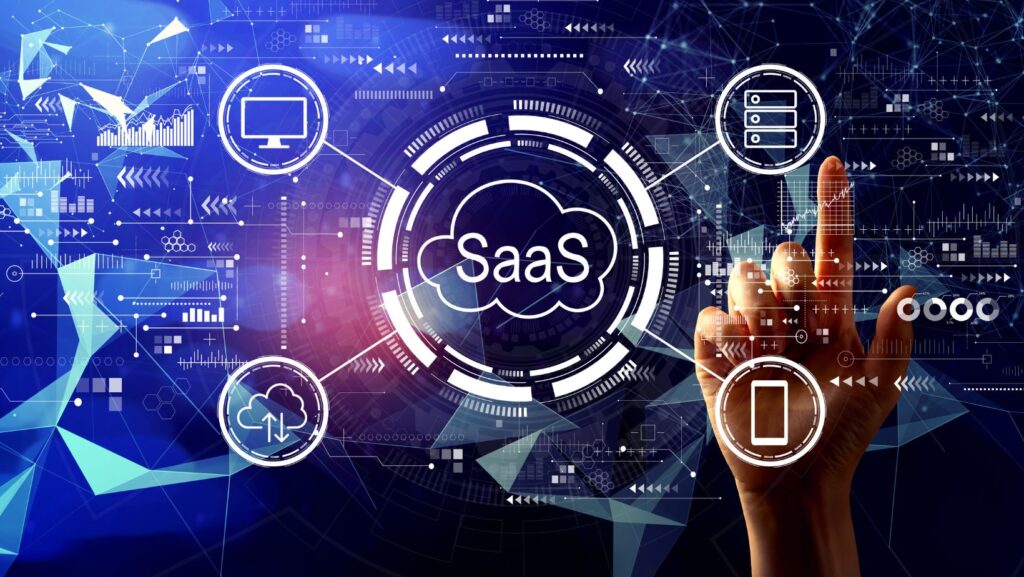
In today’s digital landscape, Software as a Service (SaaS) products have become indispensable tools across various industries, from fintech and healthcare to education and e-commerce. These cloud-based solutions offer flexibility, scalability, and cost-efficiency, revolutionizing how businesses operate and deliver services. However, the convenience of SaaS also comes with significant security concerns, especially given the sensitivity of the data handled by these platforms. As cyber threats evolve, so do the strategies and technologies to mitigate them. This blog post delves into the security measures employed by SaaS products, highlighting examples across sectors, including fintech and healthcare.
Multi-Factor Authentication (MFA)
One of the foundational security features for any SaaS product is Multi-Factor Authentication (MFA). MFA adds an extra layer of security by requiring users to provide two or more verification factors to gain access to the software beyond just a username and password. This can include something the user knows (a password or PIN), something the user has (a smartphone or security token), or something the user is (biometric verification like fingerprints or facial recognition). This method significantly reduces the risk of unauthorized access, even if a password is compromised.
Data Encryption
Data encryption is another critical security measure, ensuring that data is converted into a coded format that can only be accessed with the correct decryption key. SaaS products employ encryption both for data at rest (stored data) and data in transit (data being transferred over the internet). This means that even if data is intercepted or breached, it remains unreadable and secure from unauthorized access.

For instance, lease administration software, a fintech tool used to manage financial aspects of leasing transactions, secures sensitive financial data through encryption, safeguarding against data breaches.
Regular Security Audits and Compliance Checks
SaaS providers conduct regular security audits and compliance checks to identify vulnerabilities and ensure adherence to international standards and regulations, such as GDPR for data protection, HIPAA for healthcare information, and PCI DSS for financial data. These audits help SaaS companies stay ahead of potential security threats and ensure their practices are up-to-date.
Secure Access Management
Secure access management is crucial for controlling who can access what data within a SaaS platform. This involves setting up robust user permissions and roles, ensuring users can only access data and functionalities relevant to their jobs. For example, laboratory management software in healthcare settings restricts access to patient data and sensitive research information to authorized personnel only, minimizing the risk of data leakage or unauthorized viewing.
Regular Software Updates and Patch Management
Cybersecurity is a constantly moving target, with new vulnerabilities discovered regularly. SaaS providers mitigate this risk by regularly updating their software and implementing patches to fix vulnerabilities. This proactive approach ensures that the software remains secure against known threats and reduces the window of opportunity for attackers to exploit any security gaps.
Advanced Threat Detection
Advanced threat detection systems use artificial intelligence (AI) and machine learning algorithms to monitor for unusual or suspicious activities that could indicate a security threat, such as multiple failed login attempts, unusual data access patterns, or anomalies in user behavior.

These systems can alert administrators to potential breaches in real time, allowing for quick action to mitigate any damage.
Examples Across Industries
- Fintech Example: Lease Administration Software Lease administration software, crucial in managing the financial aspects of leasing operations, incorporates robust encryption, MFA, and compliance with financial regulations to protect sensitive data, such as payment information and personally identifiable information (PII) of lessees.
- Healthcare Example: Laboratory Management Software Laboratory management software deals with sensitive health information, making security paramount. These systems utilize secure access management, data encryption, and HIPAA compliance to protect patient data, ensuring that only authorized healthcare professionals have access to medical records and test results. In pathology labs, laboratory information systems use enhanced security measures to protect the integrity of test results.
- E-commerce Example: Customer Relationship Management (CRM) Software CRMs handle vast amounts of personal customer data, from contact information to purchase history. To protect this data, CRMs employ data encryption, MFA, and regular security audits, ensuring customer data is secure, and the company remains compliant with data protection laws.
In conclusion, as SaaS products continue to proliferate across industries, maintaining robust security measures is paramount. By implementing multi-layered security strategies, including MFA, data encryption, secure access management, and regular security audits, SaaS providers can protect against cyber threats and ensure the confidentiality, integrity, and availability of data. Whether it’s lease administration software in the fintech sector or laboratory management software in healthcare, the commitment to security is a crucial aspect of any SaaS offering, building trust with users and ensuring the long-term success of the service.










